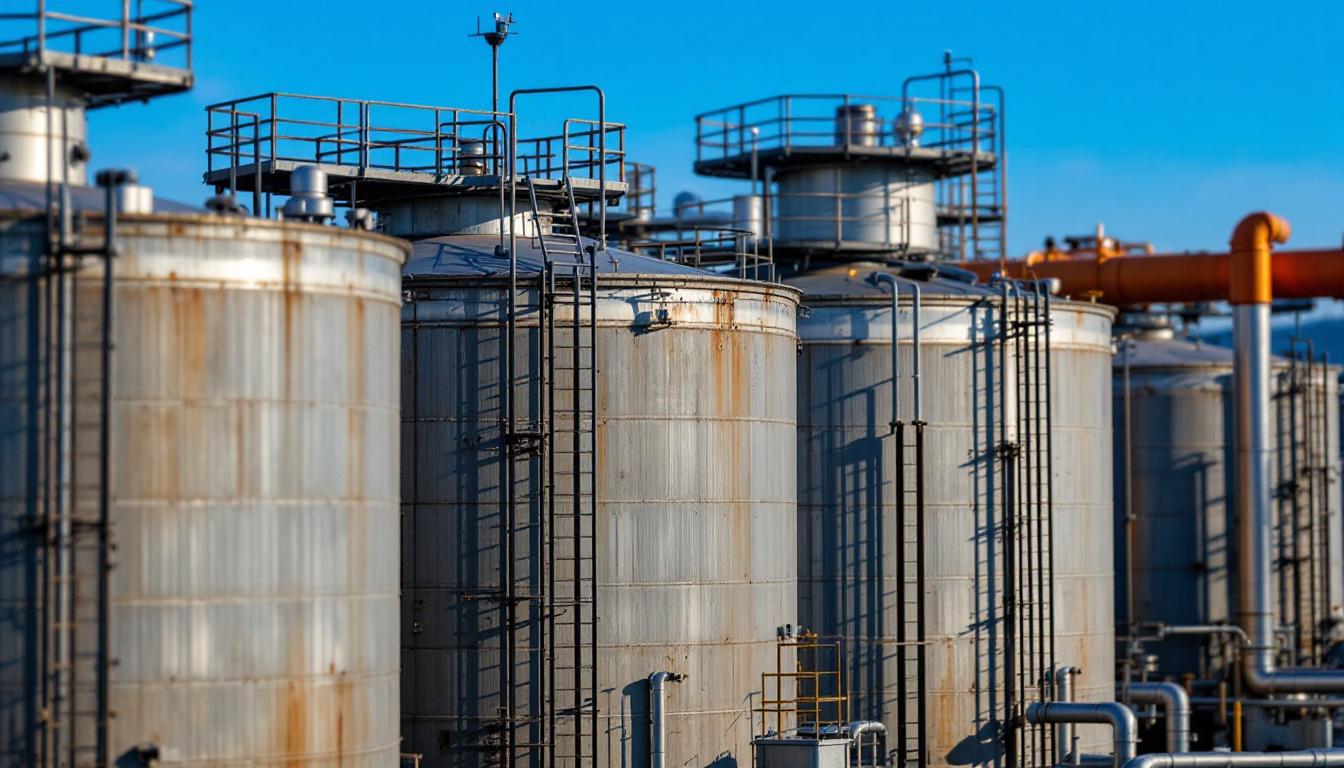
Tank Farm Oil and Gas: Industry Insights
At GLOBAL TERMINAL NETHERLANDS B.V, we’re at the forefront of tank farm operations in the oil and gas industry. Our expertise spans across various aspects of this critical sector, from storage solutions to cutting-edge management technologies.
In this post, we’ll explore the latest insights into tank farm oil and gas operations, including technological advancements and environmental considerations. We’ll also look at how these developments are shaping the future of the industry.
How Tank Farms Function in Oil and Gas
Tank farms form the backbone of oil and gas storage and distribution. These facilities have evolved significantly to meet the industry’s growing demands and stringent safety requirements.
Critical Functions of Tank Farms
Tank farms serve multiple essential functions in the oil and gas sector. They store oil at source or at destination(s) or at intermediate pump stations as buffers, acting as a facility of a group of tanks connected to pipeline(s). This storage capacity proves crucial for managing supply and demand fluctuations, ensuring a steady supply to refineries and end-users.
Types of Storage Tanks
The selection of storage tanks depends on the product stored and local regulations. Here are the main types:
- Fixed-roof tanks: These tanks store less volatile products.
- Floating roof tanks: Preferred for crude oil and more volatile substances, these tanks minimize vapor loss and reduce fire risks.
- Cryogenic tanks: Specialized double-walled tanks maintain extremely low temperatures for liquefied natural gas (LNG) storage. The outer wall (typically concrete) provides additional insulation and safety.
Safety Protocols and Regulations
Safety stands as a top priority in tank farm operations. The American Petroleum Institute (API) sets stringent standards for tank design, construction, and maintenance. API 653 provides guidelines for tank inspection, repair, and reconstruction, mandating regular inspections. At least annually, equipment should be inspected to observe for exterior dents, bulges, holes, missing bungs or caps, rust or other signs that might indicate issues.
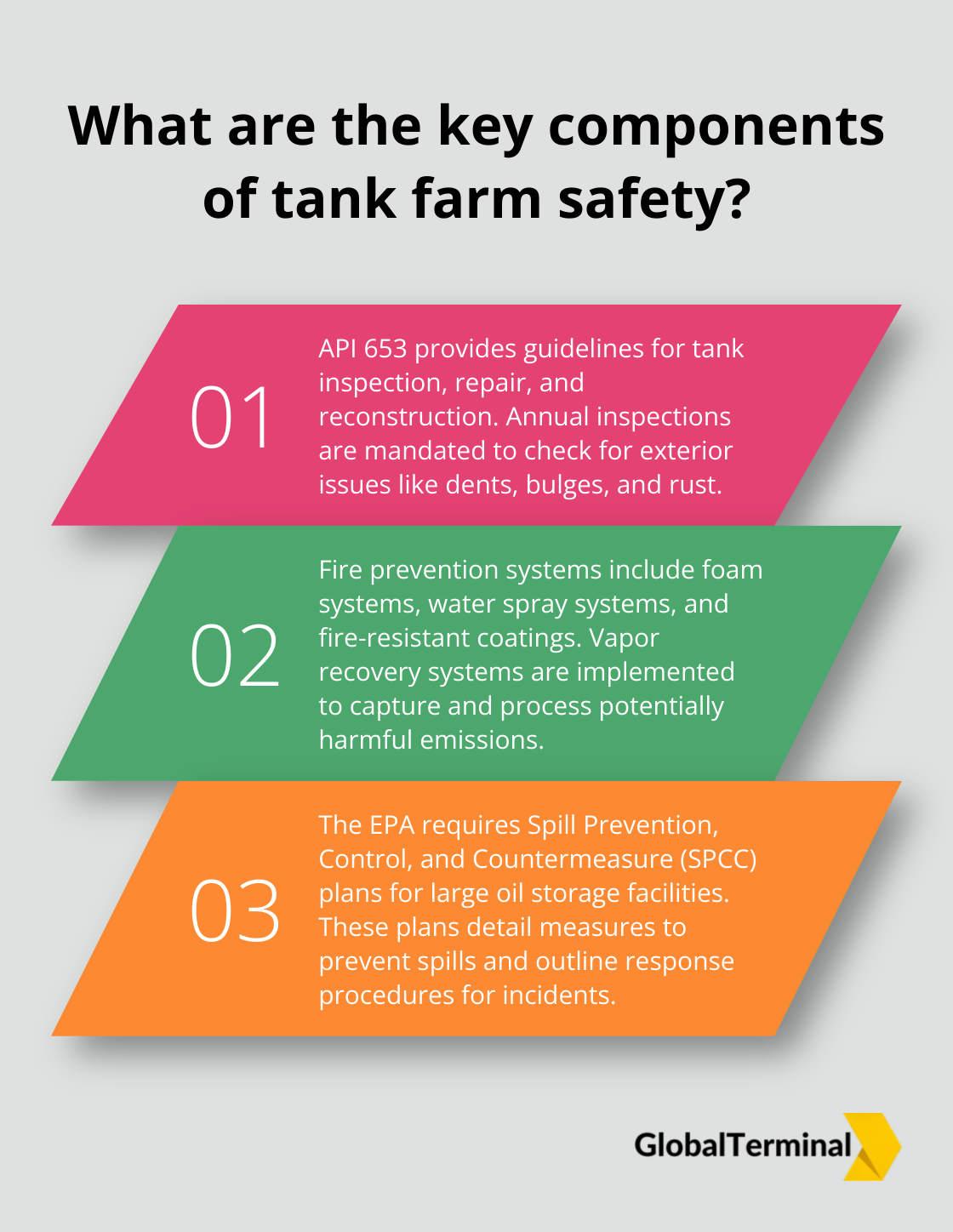
Fire prevention systems play a critical role in tank farm safety. These include:
- Foam systems
- Water spray systems
- Fire-resistant coatings on tanks
Many facilities also implement vapor recovery systems to capture and process potentially harmful emissions.
Environmental regulations have become increasingly strict. The U.S. Environmental Protection Agency (EPA) requires Spill Prevention, Control, and Countermeasure (SPCC) plans for facilities storing large quantities of oil. These plans detail measures to prevent spills and outline response procedures for incidents.
Technological Advancements
Technology integration has revolutionized tank farm operations. Some key advancements include:
- Automated tank gauging systems: These provide real-time inventory data, improving accuracy and reducing the need for manual measurements.
- Advanced leak detection systems: Sensors and algorithms identify potential issues before they become critical.
- Digital twin technology: This emerging trend creates a virtual replica of the physical facility, allowing operators to simulate various scenarios and optimize operations without risking actual assets.
As we move forward, the integration of these technologies with sustainable practices will shape the future of tank farm operations. The next section will explore how environmental considerations and sustainability efforts are transforming the industry.
How Technology Transforms Tank Farm Management
Technology revolutionizes tank farm management in the oil and gas industry. These innovations improve efficiency, safety, environmental protection, and operational optimization.
Real-Time Monitoring Enhances Operations
Automated monitoring systems now form the backbone of modern tank farm management. These systems help to streamline operations as well as supply and demand planning, sales orders and inventory in tank management.
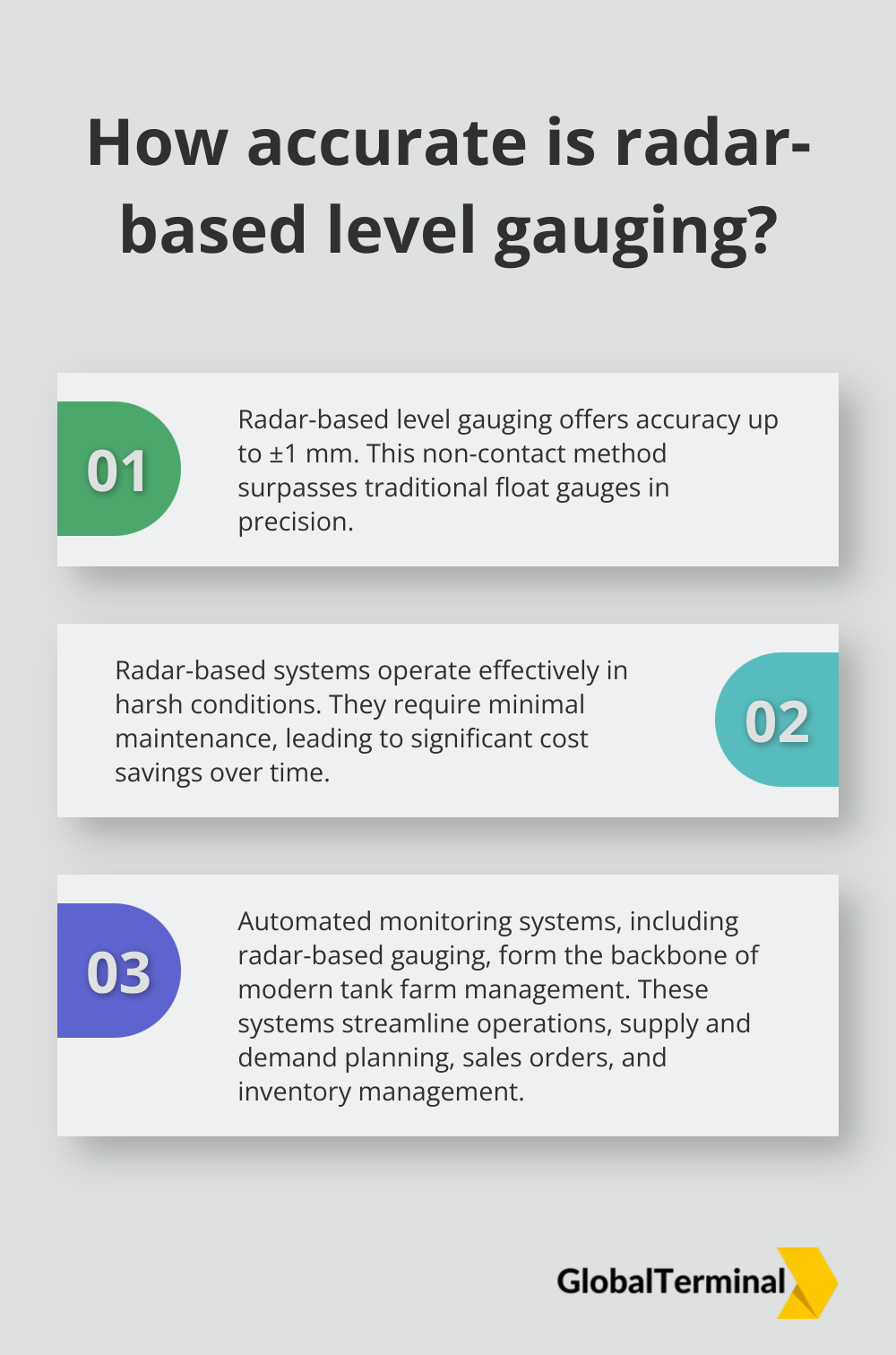
Radar-based level gauging stands out as a superior technology. This non-contact method offers accuracy up to ±1 mm, surpassing traditional float gauges. These systems operate in harsh conditions and require minimal maintenance, which leads to significant cost savings over time.
Advanced Leak Detection Protects Environment and Assets
Leak detection technologies have advanced remarkably. Modern systems combine multiple sensing methods (acoustic sensors, fiber optic cables, and vapor detection) to create a comprehensive leak detection network.
Distributed acoustic sensing (DAS) shows particular promise. This system uses fiber optic cables to detect minute vibrations caused by leaks. A pilot project at a major U.S. Gulf Coast terminal demonstrated DAS technology’s ability to identify a pinhole leak that traditional methods missed, potentially saving millions in product loss and environmental cleanup costs.
Digital Twins Optimize Operations
Digital twin technology creates a virtual replica of the entire facility. Businesses may lower operating costs, avoid downtime, and enhance safety by building virtual copies of physical infrastructure like refineries and pipelines.
Digital twins also prove invaluable for training purposes. Operators can practice responding to emergency scenarios in a risk-free virtual environment, which improves safety protocols and response times. This technology benefits facilities handling hazardous materials, where real-world training exercises pose dangers and incur high costs.
The Future of Tank Farm Technology
As technology continues to advance, we can expect further innovations in tank farm management. Artificial intelligence and machine learning will likely play a larger role in predictive maintenance and operational optimization. The integration of blockchain technology may enhance supply chain transparency and security.
These technological advancements not only improve efficiency and safety but also contribute to sustainability efforts in the oil and gas industry. The next chapter will explore how environmental considerations and sustainability initiatives are shaping the future of tank farm operations.
Greening Tank Farms: The Sustainability Challenge
At tank farms, environmental stewardship has become a top priority. The oil and gas industry faces pressure to reduce its environmental footprint, and tank farms play a key role in this effort. This chapter explores the strategies and innovations driving sustainability in the sector.
Emissions Reduction Strategies
Tank farms prioritize emissions reduction to address environmental concerns. Volatile organic compounds (VOCs) contribute to air pollution and potential health hazards. Many facilities implement vapor recovery units (VRUs) to capture VOCs that would otherwise escape during loading and unloading operations.
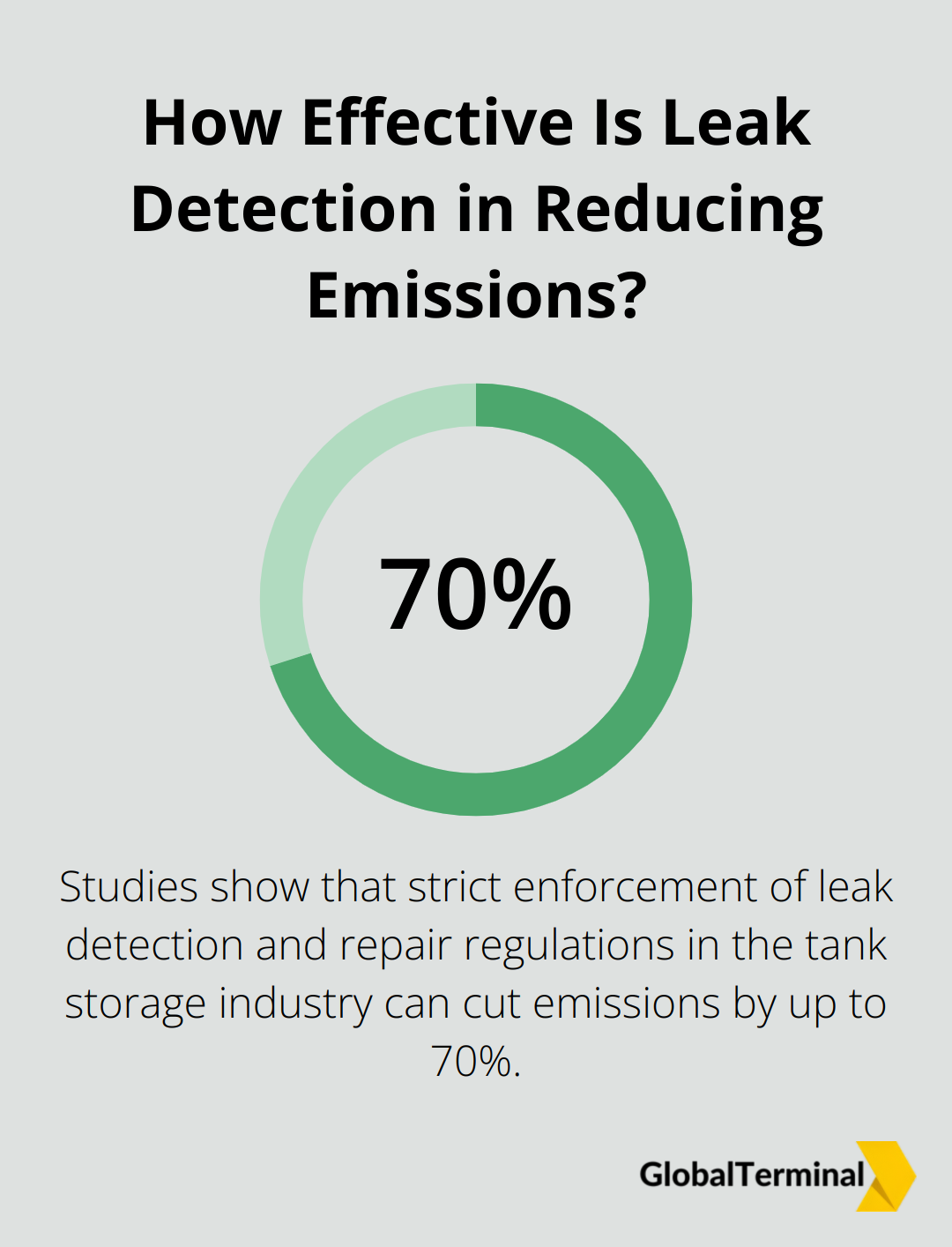
Studies show that strict enforcement of leak detection and repair regulations in the tank storage industry can cut emissions by up to 70%. This benefits the environment, improves workplace safety, and can create a new revenue stream by recovering valuable product.
Floating roof tanks also effectively minimize emissions. These tanks reduce the vapor space above the stored liquid, cutting evaporation.
Innovative Waste Management Practices
Waste management in tank farms focuses on maximizing efficiency and minimizing environmental impact. Automated tank cleaning systems represent an innovative approach gaining traction in the industry.
These robotic systems clean tanks faster and more thoroughly than manual methods, which reduces downtime and minimizes waste generation. Some systems recover and recycle cleaning fluids, further reducing environmental impact and operational costs.
Sludge management also benefits from new technologies. Advanced centrifuge systems separate oil, water, and solids from tank bottom sludge, allowing for the recovery of valuable product and reducing waste volume.
Renewable Energy Integration
Tank farms increasingly integrate renewable energy into their operations. This shift not only reduces reliance on grid electricity but also provides power for critical systems during outages.
Solar panels installed on tank roofs and unused land within tank farms offer a sustainable power source. In suitable locations, wind turbines provide another renewable energy option. These sources can sometimes generate excess power, which facilities sell back to the grid, creating an additional revenue stream.
Energy storage systems, such as large-scale batteries, maximize the benefits of renewable energy. These systems store excess energy generated during peak production times for use during periods of low production or high demand.
Sustainable Water Management
Water conservation and management play a significant role in sustainable tank farm operations. Facilities implement water recycling systems to reduce freshwater consumption and minimize wastewater discharge.
Rainwater harvesting systems collect and store rainwater from tank roofs and other surfaces. This water can be used for non-potable purposes such as tank cleaning or fire suppression systems, reducing the demand on local water supplies.
Advanced wastewater treatment technologies allow facilities to treat and reuse water on-site. These systems not only reduce water consumption but also minimize the environmental impact of wastewater discharge.
Final Thoughts
The tank farm oil and gas industry faces significant transformation through advanced technologies and sustainable practices. Real-time monitoring, leak detection systems, and digital twins enhance operational efficiency and safety while minimizing environmental risks. These innovations position tank farms to meet 21st-century challenges effectively.
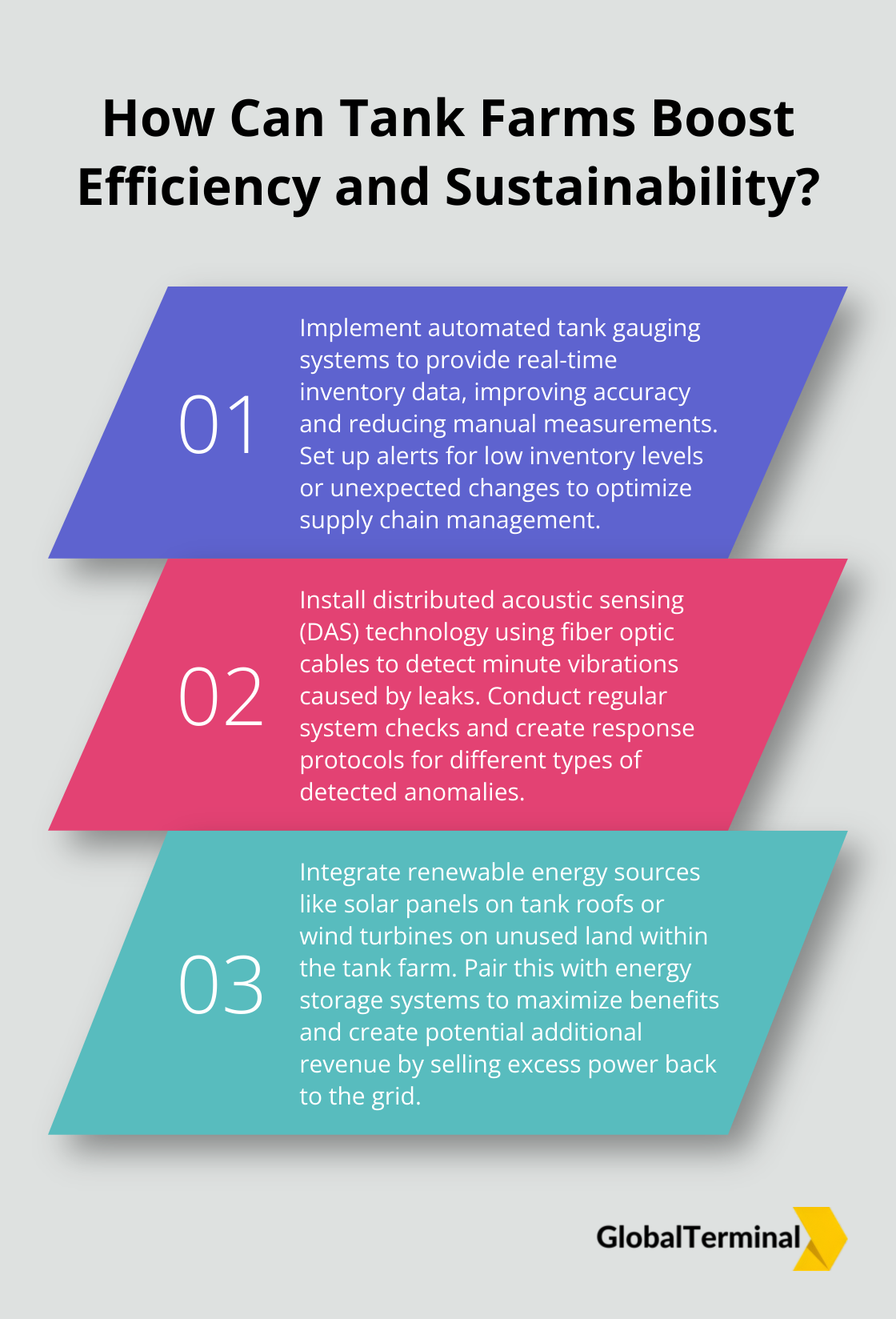
Environmental sustainability now drives modern tank farm operations. Emissions reduction, waste management innovations, and renewable energy integration reshape the industry’s approach to environmental stewardship. These efforts comply with stringent regulations and establish tank farms as responsible corporate entities in the global energy landscape.
GLOBAL TERMINAL NETHERLANDS B.V leads this evolving landscape with strategic locations and state-of-the-art facilities. We balance operational efficiency with environmental responsibility to meet diverse client needs in the tank farm oil and gas sector. Our commitment to innovation and continuous improvement ensures our vital role in the global energy future.

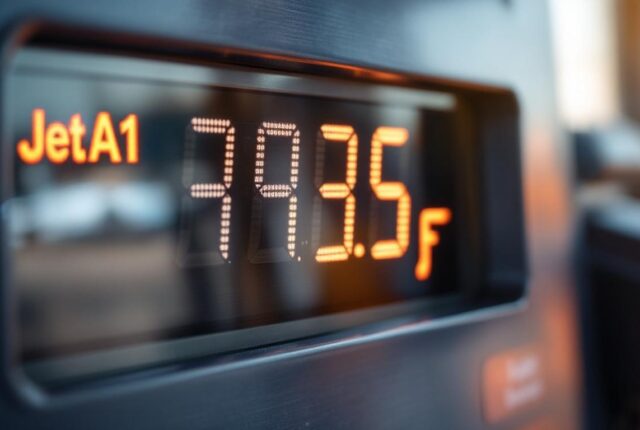
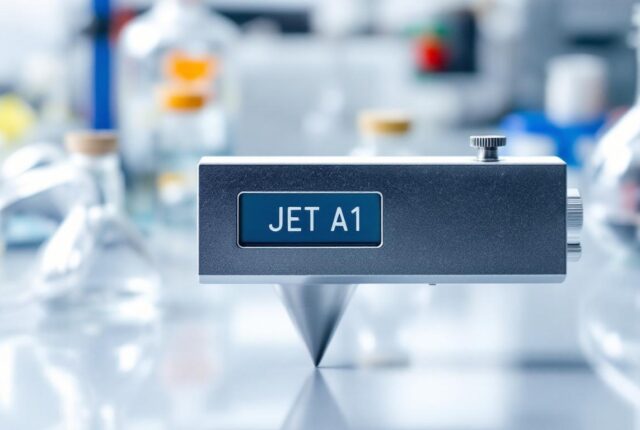
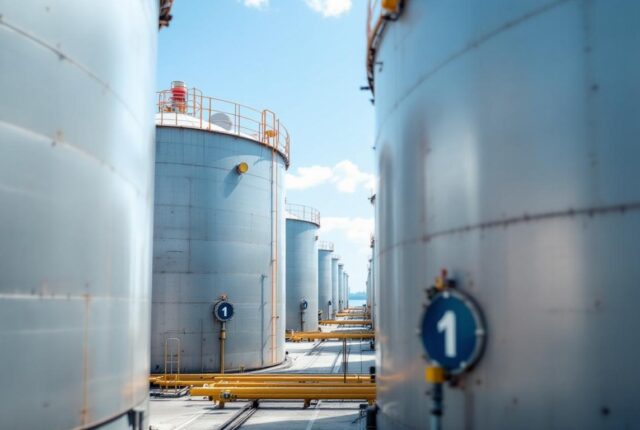

Leave a Reply